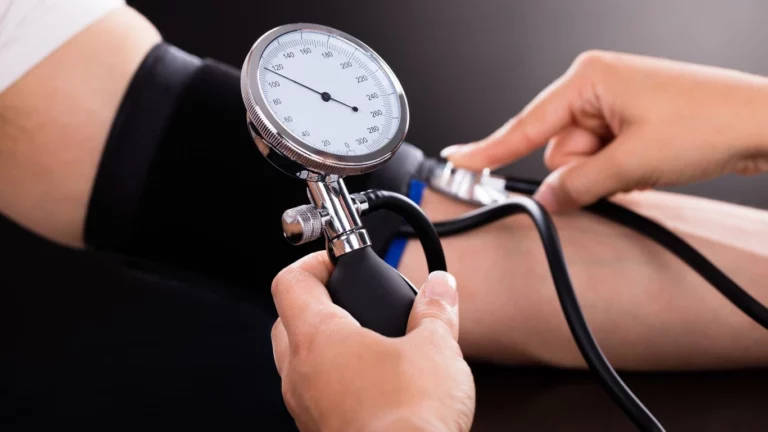Best Low-Salt GERD Meal Ideas to Soothe Your Digestive Health 🍽️
If you’ve ever struggled with GERD (Gastroesophageal Reflux Disease), you know how miserable it can be when acid reflux flares up. One thing that made a huge difference in managing my GERD (and trust me, I’ve been there!) was switching to best low-salt GERD meal ideas. Reducing salt isn’t just about avoiding high-sodium foods; it’s about giving your digestive system the best chance to thrive.
But here’s the thing: Low-salt doesn’t have to mean bland or boring. You can still enjoy tasty meals while helping your body stay calm and reduce reflux. In this article, I’m sharing some of my go-to low-salt GERD-friendly recipes—meals that are both soothing and satisfying, no matter your GERD triggers.
Why Low-Salt Meals Are Crucial for GERD

Let’s dive into the science (don’t worry, I’ll keep it simple!). Salt can trigger GERD symptoms because it can increase acid production in the stomach. And as you probably know, more acid means more discomfort—heartburn, bloating, and that dreadful feeling of food rising up your esophagus.
When you switch to low-salt meals, you give your digestive system the space it needs to heal. By cutting back on salt, you’re not only reducing irritation, but you’re also nourishing your body with foods that are naturally anti-inflammatory and less likely to trigger reflux.
Best Low-Salt GERD Meal Ideas for Every Meal of the Day 🍴
Now that you know why low-salt meals are important, let’s talk about the best low-salt GERD meal ideas to help you feel better each day.
1. Breakfast: Starting the Day Right 🌅
- Oatmeal with Fresh Berries: Oh, oatmeal. This one’s my absolute favorite in the morning. It’s gentle on your stomach, and it can help keep everything moving. I love topping mine with fresh berries like strawberries or blueberries. They’re packed with antioxidants, and best of all, they’re super gentle on the digestive system.
- Egg Whites with Avocado: For a savory breakfast, you can’t go wrong with egg whites scrambled up with a few slices of avocado. The avocado is full of healthy fats that support your gut, and the egg whites are easy to digest. This combo will keep you full without the bloating that often comes with GERD.
2. Lunch: Filling Yet Light 🍛
- Grilled Chicken Salad with Olive Oil Dressing: Okay, hear me out. This one sounds simple, but I promise, it’s a winner. I’m talking about grilled chicken breast on a bed of mixed greens, with tomatoes and cucumbers—super refreshing! Drizzle some olive oil (and maybe a squeeze of lemon) for a light dressing. Olive oil is anti-inflammatory, so it helps your body without making it feel heavy.
- Quinoa and Veggie Stir-fry: When I’m craving something filling, quinoa is always my go-to. It’s packed with protein, and you can stir-fry it with a bunch of veggies like bell peppers, zucchini, and spinach. You can even throw in some garlic (but keep it mild to avoid heartburn). A little low-sodium soy sauce adds flavor without the salt overload.
3. Dinner: Keep It Comforting 🍲
- Baked Salmon with Roasted Vegetables: There’s just something about salmon that feels fancy, even though it’s so easy to make. I love it because it’s packed with omega-3s, which help reduce inflammation. Pair it with roasted veggies like sweet potatoes, carrots, and spinach. This is a dinner that feels indulgent but doesn’t upset your stomach.
- Rice and Lentil Stew: If I’m in the mood for something comforting, I go for a rice and lentil stew. It’s warm, hearty, and easy on the stomach. Plus, lentils are full of fiber, which helps with digestion. Throw in some mild herbs like thyme and basil, and you’ve got a filling dinner that won’t cause a reflux disaster.
4. Snacks: Keep It Light Between Meals 🍏
- Hummus with Veggies: A light snack that’s both satisfying and GERD-friendly. I love pairing some homemade or store-bought low-salt hummus with sliced cucumbers or carrots. It’s crunchy, creamy, and just what I need when I’m a little hungry between meals.
- Apple with Almond Butter: A sweet snack that doesn’t irritate your stomach? Yes, please! Slice up an apple, grab a spoonful of almond butter, and dip away. The apple provides a nice crunch, while the almond butter gives you that creamy texture without causing any reflux issues.
Troubleshooting Common Issues with Low-Salt GERD Meals

When you start eating low-salt, there can be a few hiccups along the way. Here are some things I’ve run into (and how I fixed them):
- Bland Flavor: I get it—low-salt can sometimes feel like you’re eating cardboard. But trust me, you don’t need to drown your food in salt to make it taste good. Instead, I lean on fresh herbs like rosemary, basil, and thyme. I also use lemon juice, vinegar, or a sprinkle of nutritional yeast for that extra burst of flavor.
- Digestive Discomfort: When you cut back on salt, your body might take a little time to adjust. I recommend slowly introducing new ingredients and listening to your body. You’ll figure out what works and what doesn’t. And don’t be afraid to switch up meals if something doesn’t sit well.
- Limited Meal Options: Sometimes it feels like you’re eating the same things over and over. I promise you, it’s not as limited as it seems! Keep experimenting with different combinations of grains, proteins, and veggies. You’ll find plenty of tasty options that don’t upset your stomach.
Real-Life Success Stories: Low-Salt GERD Meals in Action

Sarah’s Journey to Comfort
I remember Sarah coming into my office feeling defeated. Her GERD was flaring up constantly, and she had tried all kinds of meds. We talked about diet changes, and she decided to try out a low-salt meal plan. Within just a couple of weeks, she noticed a significant difference—her heartburn decreased, and she was able to enjoy meals again. She loved the grilled chicken salad with olive oil dressing and the baked salmon with roasted veggies. Those two meals were her go-to.
Michael’s Experience with GERD-Friendly Foods
Michael had a tough time adjusting to a low-salt diet at first. He was used to eating processed snacks and salty chips, so cutting back felt like a big change. But once he tried quinoa and veggie stir-fry with low-salt soy sauce, he was hooked. The mild flavors worked for him, and he noticed less bloating and heartburn. Michael’s story just goes to show that finding meals that work for you can truly transform how you feel.
Key Takeaways / Summary
- Low-salt meals are a game-changer when managing GERD. They help reduce inflammation, calm the stomach, and prevent reflux flare-ups.
- Some of the best low-salt GERD meal ideas include oatmeal, grilled chicken salads, salmon dinners, and hearty lentil stews.
- Experiment with flavors using herbs, lemon, and low-sodium seasonings to keep your meals tasty and satisfying.
5 FAQs About Low-Salt GERD Meals
- How do I know if a food is GERD-friendly?
It’s all about listening to your body! But generally, steer clear of overly fatty, spicy, or acidic foods. Stick to lean proteins, whole grains, and fresh veggies. - Can I still eat salt on a low-salt GERD diet?
Yes, but it’s important to keep it minimal. Try using salt substitutes or focusing on other ways to add flavor without sodium. - What are some easy low-salt snacks?
Try hummus with veggies, fruit with almond butter, or a handful of unsalted nuts. - Is low-salt enough to manage GERD on its own?
While diet plays a huge role, make sure to pair it with other GERD management strategies like proper meal timing and avoiding lying down immediately after eating. - Can I still enjoy restaurant meals with GERD?
Yes! Ask for no added salt, and look for grilled or baked options rather than fried. Many restaurants are happy to accommodate dietary restrictions.
Appendix
References
- National Institute of Diabetes and Digestive and Kidney Diseases (NIDDK)
- American Gastroenterological Association (AGA)
Disclaimer
This article is meant for informational purposes only. Always consult a healthcare provider before making significant changes to your diet.
Call to Action
If you’re tired of struggling with GERD, give these best low-salt GERD meal ideas a try! Start small, experiment, and you might just find a few dishes that bring you comfort. And if you ever need more guidance, I’m always here to help!

Camellia Wulansari is a dedicated Medical Assistant at a local clinic and a passionate health writer at Healthusias.com. With years of hands-on experience in patient care and a deep interest in preventive medicine, she bridges the gap between clinical knowledge and accessible health information. Camellia specializes in writing about digestive health, chronic conditions like GERD and hypertension, respiratory issues, and autoimmune diseases, aiming to empower readers with practical, easy-to-understand insights. When she’s not assisting patients or writing, you’ll find her enjoying quiet mornings with coffee and a medical journal in hand—or jamming to her favorite metal band, Lamb of God.






